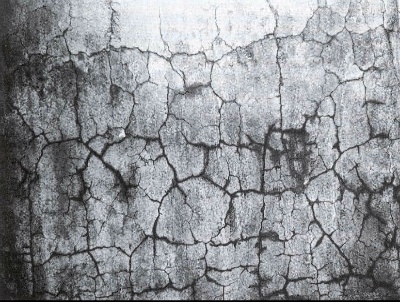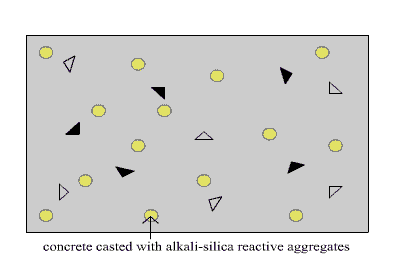Case 1 – Alkali-Silica Reaction
Navigation
- Introduction
- Causes of Defects
- Good Practices
- Standards
- Maintenance and Diagnostics
- Remedial
- Similar Cases
- References


Introduction
Alkali Silica Reaction (ASR)
Type of Building: Public
The case shows an external wall with cracks and widespread deposits on the surface. The deposits were suspected to be formed from ASR.
ASR is a reaction between [1]:
- hydroxyl ions in the pore water of concrete
- certain form of silica contained in alkali-silica aggregates
SiO2 (solid) + 2NaOH (solution) ======= Na2SiO3.2H2O (gel)
The reaction creates a calcium alkali-silica gel, which is hygroscopic so that in the presence of water, it will cause a considerable volume expansion.
The main evidence for deterioration of concrete due to ASR is the development of cracking at certain late stages. This cracking is due to expansive force of the gel that is formed during the reaction. Also known as “pattern cracking” [1]. Other changes involve changes in the original composition of aggregates, changes in texture due to volume increase of particles and the formation of microcracks [2-3].